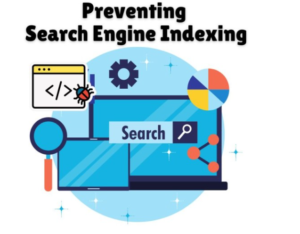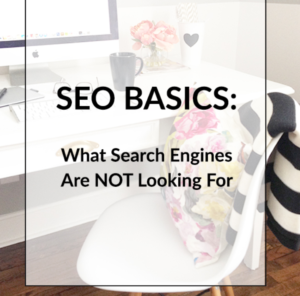Search Engine Optimization (SEO) is a constantly evolving field, and staying on top of what search engines (often abbreviated as SEs) like Google prioritize is crucial for success. However, it’s equally important to understand what SEs don’t want. Over the years, SEs have become smarter and more sophisticated, and they actively penalize or ignore tactics that violate their guidelines or provide a poor user experience.
In this article, we’ll explore what SEs are not looking for in SEO, why they avoid these practices, and how you can steer clear of them to build a sustainable, search-friendly website.
Contents
- 1 Why Search Engines Avoid Certain Practices
- 2 What Search Engines Are Not Looking for in SEO
- 2.1 1. Keyword Stuffing
- 2.2 2. Duplicate Content
- 2.3 3. Low-Quality or Thin Content
- 2.4 4. Spammy Backlinks
- 2.5 5. Cloaking
- 2.6 6. Hidden Text or Links
- 2.7 7. Over-Optimized Anchor Text
- 2.8 8. Doorway Pages
- 2.9 9. Excessive Ads or Pop-Ups
- 2.10 10. Slow Page Speed
- 2.11 11. Ignoring Mobile-Friendliness
- 2.12 12. Unnatural Link Building
- 2.13 13. Ignoring User Intent
- 2.14 14. Overuse of Structured Data (Schema Markup)
- 2.15 15. Ignoring Core Web Vitals
- 3 How to Avoid These Practices
- 4 Conclusion
Why Search Engines Avoid Certain Practices

search engines
Search engines like Google aim to deliver the most relevant, high-quality, and user-friendly content to their users. To achieve this, they use complex algorithms that evaluate websites based on hundreds of factors. Practices that manipulate rankings, provide a poor user experience, or violate ethical guidelines are actively discouraged or penalized.
Here’s why search engines don’t want certain things in SEO:
- To Maintain Quality: SEs prioritize content that genuinely helps users. Low-quality or manipulative tactics undermine this goal.
- To Ensure Fairness: SEs want to create a level playing field for all websites, rewarding those that follow best practices.
- To Protect Users: Practices like spammy links or misleading content harm users, and search engines aim to protect their experience.
- To Stay Relevant: By penalizing outdated or manipulative tactics, search engines ensure their results remain accurate and trustworthy.
What Search Engines Are Not Looking for in SEO

What Search Engines Are Not Looking for in SEO
Here’s a detailed breakdown of practices and elements that SEs avoid or penalize:
1. Keyword Stuffing
- What It Is: Overloading content with excessive keywords in an attempt to manipulate rankings.
- Why Search Engines Don’t Want It: Keyword stuffing creates a poor user experience by making content unnatural and difficult to read. It also violates Google’s Webmaster Guidelines, which emphasize creating content for users, not search engines.
- Example: “We sell cheap shoes, cheap shoes online, cheap shoes for men, cheap shoes for women, cheap shoes for kids…”
2. Duplicate Content
- What It Is: Copying content from other websites or reusing the same content across multiple pages on your site.
- Why Search Engines Don’t Want It: Duplicate content confuses search engines and makes it harder for them to determine which version to rank. It also provides little value to users.
- Example: Publishing the same blog post on multiple pages of your website or scraping content from competitors.
3. Low-Quality or Thin Content
- What It Is: Content that provides little to no value to users, such as overly short articles, auto-generated content, or pages stuffed with ads.
- Why Search Engines Don’t Want It: Low-quality content fails to meet user intent and degrades the overall quality of search results.
- Example: A 200-word article with no depth or originality, or a page filled with affiliate links and no useful information.
4. Spammy Backlinks
- What It Is: Acquiring low-quality or irrelevant backlinks from spammy websites, link farms, or paid link schemes.
- Why Search Engines Don’t Want It: Spammy backlinks are a form of manipulation and undermine the credibility of search results. Google’s algorithms, like Penguin, specifically target such practices.
- Example: Buying 1,000 backlinks from a shady website for $10.
5. Cloaking
- What It Is: Showing different content to SEs and users to manipulate rankings.
- Why Search Engines Don’t Want It: Cloaking deceives both search engines and users, leading to a poor experience and unfair rankings.
- Example: Displaying a page full of keywords to SEs crawlers but showing a normal page to users.
6. Hidden Text or Links
- What It Is: Adding text or links that are invisible to users but visible to SEs.
- Why Search Engines Don’t Want It: Hidden text and links are deceptive and violate Google’s guidelines.
- Example: Using white text on a white background or hiding links in tiny fonts.
7. Over-Optimized Anchor Text
- What It Is: Using exact-match keywords excessively in anchor text for internal or external links.
- Why Search Engines Don’t Want It: Over-optimized anchor text appears manipulative and unnatural.
- Example: Using “best SEO services” as anchor text repeatedly across your site.
8. Doorway Pages
- What It Is: Creating pages specifically designed to rank for certain keywords but redirect users to another page.
- Why Search Engines Don’t Want It: Doorway pages provide a poor user experience and are considered manipulative.
- Example: A page optimized for “cheap flights to New York” that redirects users to a generic travel booking site.
9. Excessive Ads or Pop-Ups
- What It Is: Overloading a page with ads or intrusive pop-ups that disrupt the user experience.
- Why Search Engines Don’t Want It: Excessive ads make it difficult for users to access content, leading to a negative experience.
- Example: A page where users have to close multiple pop-ups before reading the content.
10. Slow Page Speed
- What It Is: Websites that take too long to load.
- Why Search Engines Don’t Want It: Slow page speed frustrates users and increases bounce rates. Google considers page speed a ranking factor.
- Example: A website that takes more than 5 seconds to load on mobile devices.
11. Ignoring Mobile-Friendliness
- What It Is: Websites that are not optimized for mobile devices.
- Why Search Engines Don’t Want It: With most users browsing on mobile, search engines prioritize mobile-friendly websites.
- Example: A website with tiny text and unclickable buttons on mobile devices.
12. Unnatural Link Building
- What It Is: Using manipulative tactics to build backlinks, such as link exchanges or PBNs (Private Blog Networks).
- Why Search Engines Don’t Want It: Unnatural link building undermines the integrity of search results.
- Example: Participating in “link schemes” where websites agree to link to each other for SEO benefits.
13. Ignoring User Intent
- What It Is: Creating content that doesn’t align with what users are searching for.
- Why Search Engines Don’t Want It: Content that doesn’t meet user intent leads to higher bounce rates and lower satisfaction.
- Example: Writing a blog post about “how to bake a cake” when users are searching for “cake delivery services.”
14. Overuse of Structured Data (Schema Markup)
- What It Is: Adding excessive or irrelevant structured data to manipulate rich snippets.
- Why Search Engines Don’t Want It: Misusing structured data can lead to penalties and a poor user experience.
- Example: Adding schema markup for reviews when your page doesn’t contain any reviews.
15. Ignoring Core Web Vitals
- What It Is: Failing to optimize for Core Web Vitals, which measure user experience metrics like loading, interactivity, and visual stability.
- Why Search Engines Don’t Want It: Poor Core Web Vitals lead to a frustrating user experience.
- Example: A website with large, unoptimized images that delay page loading.
How to Avoid These Practices
- Focus on Quality Content: Create original, valuable, and user-focused content.
- Follow Google’s Guidelines: Adhere to Google’s Webmaster Guidelines and best practices.
- Audit Your Backlinks: Regularly check your backlink profile and disavow spammy links.
- Optimize for User Experience: Ensure your site is fast, mobile-friendly, and easy to navigate.
- Use Tools: Leverage tools like Google Search Console, Ahrefs, and SEMrush to monitor your site’s health.
Conclusion
Understanding what SEs are not looking for in SEO is just as important as knowing what they prioritize. By avoiding manipulative tactics, focusing on quality, and prioritizing user experience, you can build a sustainable SEO strategy that aligns with search engine guidelines and delivers long-term results.
Remember, SEO is not about tricking search engines—it’s about creating a website that genuinely serves your audience. Stay ethical, stay user-focused, and you’ll be on the right track to SEO success.
